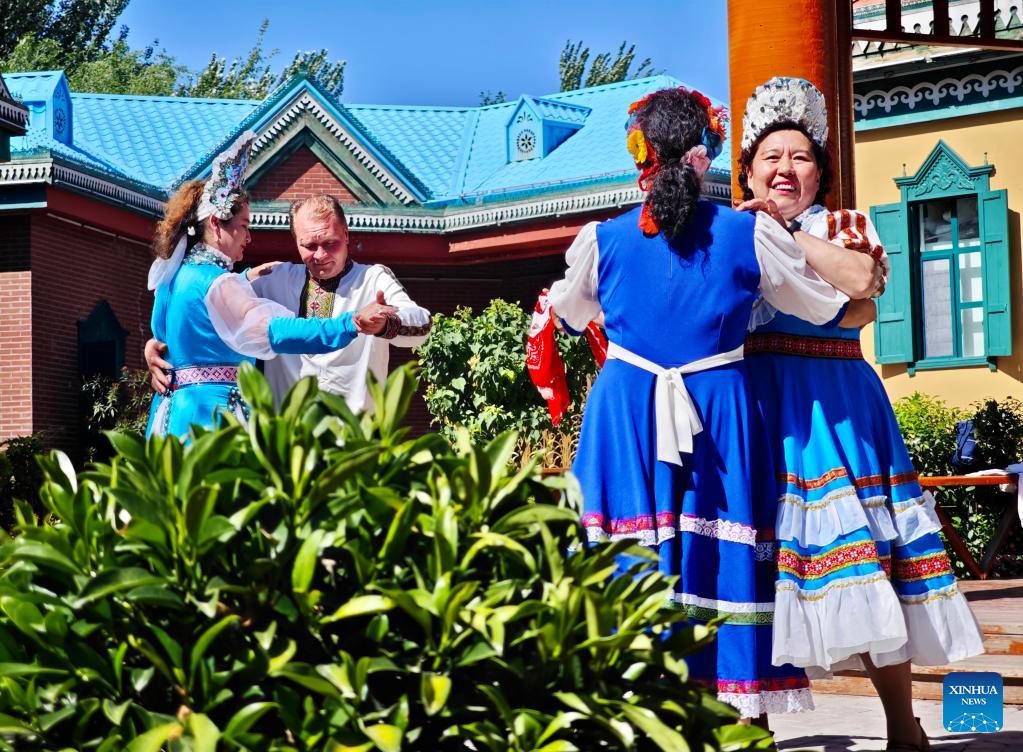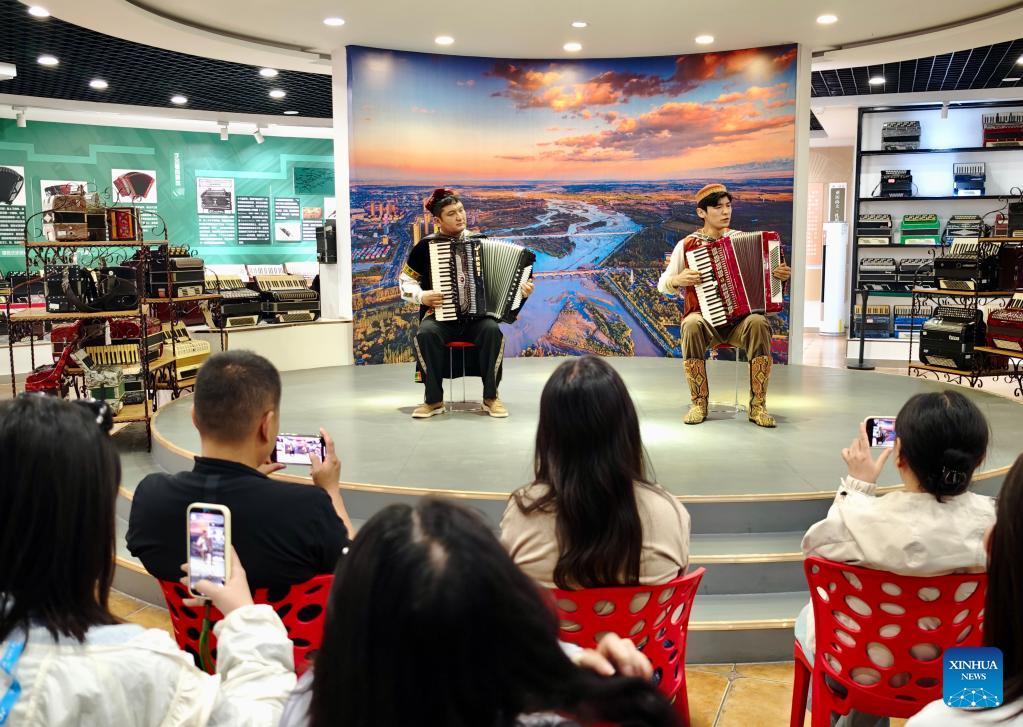
 0 Comment(s)
0 Comment(s) Print
Print E-mail Xinhua, June 3, 2024
E-mail Xinhua, June 3, 2024

Residents of Russian ethnic group perform folk dance on Liuxing Street in Yining City, Ili Kazak Autonomous Prefecture, northwest China's Xinjiang Uygur Autonomous Region, May 28, 2024. (Xinhua/Wang Fei)
Strolling through the historic Liuxing Street, tourists are greeted by the sweat echo of traditional folk tunes, accompanied by joyful dance performances from local residents and the aroma of freshly baked bread.
Located in Yining City, Kazak Autonomous Prefecture of Ili, in northwest China's Xinjiang Uygur Autonomous Region, Liuxing Street features a unique hexagonal layout designed by a German engineer and built in the mid-1930s.
Over the past century, residents from various ethnic groups, including Han, Kazak, Hui, Uygur, Russian and Tatar, have lived harmoniously together here. Currently, it is home to more than 3,000 residents.
In 2014, the local government allocated an investment of 30 million yuan (about 4.2 million U.S. dollars) to initiate the protective and upgrade renovation project for the old street. Five years later, an additional 130 million yuan was pooled into the preservation and restoration of Liuxing Street and the city's culture and tourism department invested over 50 million yuan in 2022 to facilitate the development of tourism, according to Ma Liying, general manager of a tourism company in charging of the operation and management of scenic spot in Liuxing Street.
Today, the old neighborhood has been transformed into an ethnic cultural area, centered around historical buildings, traditional ethnic crafts as well as music and arts.
"We've seen an increasing number of tourists from across the country, as well as foreign visitors in recent years," said Ma, adding they came here to experience the integration of multiple ethnic communities.
The surge in tourism has also benefited the local economy. During this year's May Day holiday, Yining City received 692,700 domestic tourists, an increase of 27.55 percent year-on-year. This generated a tourism revenue of 433 million yuan, which represents a year-on-year growth of 59.88 percent.
At present, the scenic spot of the street hosts more than 300 guesthouses, dining establishments, handicrafts shops, hotels and specialty product stores. These businesses have created jobs for over 1,100 local employees, 890 of which are from different ethnic groups.
In the first quarter of 2024 alone, 21 new businesses were established, creating over 50 new jobs.
Zhang Xinyu, who opened a guesthouse in August 2021, now runs 14 rooms and offers meals, coffee and wine on the first floor. The guesthouse employs 10 workers from diverse ethnic backgrounds.
Other services such as car rentals, travel photography and customized itinerary planning have been provided for tourists.
Zhang said her guesthouses received about 3,000 tourists last year, including foreign travelers from Kazakhstan, Britain, the United States, Germany and Japan, which generated nearly 3 million yuan in revenue.
"The Belt and Road Initiative has brought more tourists and investors to Ili, boosting tourism and economic development. Additionally, by promoting the culture of the Silk Road, it has helped more people understand Xinjiang. This has greatly contributed to the economic development of Xinjiang," Zhang said.
"I really like the cozy neighborhood and enthusiastic residents here in Liuxing Street. I would like to come again and bring my family to explore the beauty of the vast Xinjiang," said Sun Li, a tourist from Shanghai. She chose to travel around the region by train with her daughter for a fresh and different experience.
"Increasingly convenient transportation linking the inland region, especially the opening of new flights and railway routes, has greatly benefited Yining. It has diversified travel options for tourists, particularly with the introduction of tourist trains, which have made positive contributions to the development of Xinjiang's trade, logistics, and tourism industries," Ma said.
Among the efforts to boost the tourism, Xinjiang's railway departments have been improving its services over the years. They plan to operate 106 tourist trains this year. As of May 30, 27 trains have already successfully operated, according to China Railway Urumqi Group Co., Ltd.
Xinjiang's tourism development has shown strong momentum in recent years. In 2023, Xinjiang received 265 million tourists, an increase of 117 percent. The tourism revenue reached 296.7 billion yuan, a growth of 227 percent.

Tourists enjoy a performance at an accordion museum on Liuxing Street in Yining City, Ili Kazak Autonomous Prefecture, northwest China's Xinjiang Uygur Autonomous Region, May 28, 2024. (Xinhua/Wang Fei)